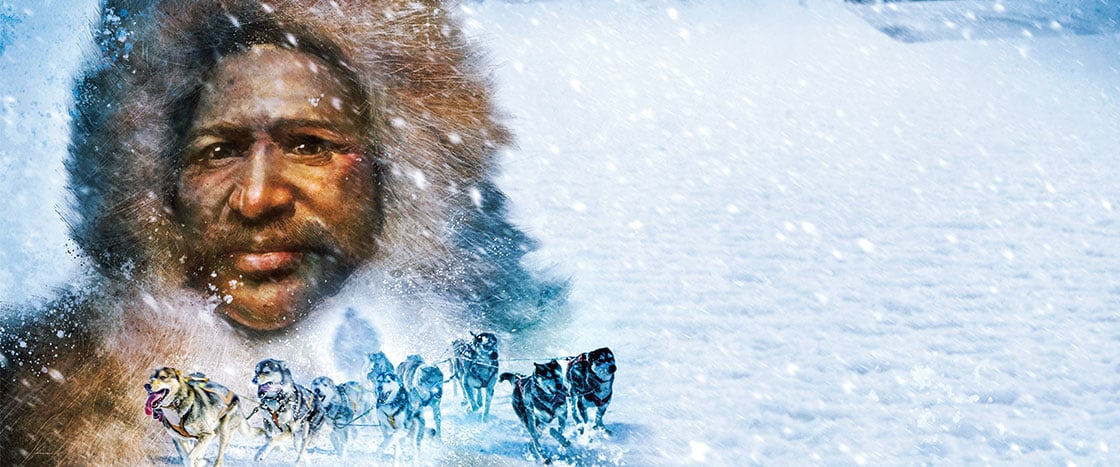It was April 3, 1909, and an American explorer named Matthew Henson was trudging across the ice-covered Arctic Ocean. All around him stretched the frozen wilderness of the Arctic, a forbidding region of brutal cold and blinding blizzards. Enormous slabs of sea ice floated on the deathly cold ocean water. No human being could survive here for long. Even polar bears stayed away.
But as Henson made his way across the ice, fiery excitement warmed his heart. He felt sure that he was just days away from achieving his dream of being one of the first humans to set foot on the North Pole. Henson put his head down and pushed against the fierce wind.
Suddenly, he lost his balance. The ice beneath his feet wobbled. And before Henson knew what was happening, he had slipped off the ice and tumbled into the ocean. The frigid water hit his skin like millions of piercing needles.
Gasping for breath, he clawed at the jagged edges of the ice, trying to pull himself up.
But it was no use. The water seemed to drag him down.
Henson had dedicated nearly 20 years of his life trying to get to the North Pole. Now it seemed it would all end here, in the icy depths of the Arctic Ocean.
It was April 3, 1909. An explorer named Matthew Henson trudged across the ice-covered Arctic Ocean. All around him was the frozen wilderness of the Arctic, a forbidding region of brutal cold and blizzards. Huge slabs of sea ice floated on the cold ocean water. No human could survive here for long. Even polar bears stayed away.
But as Henson moved across the ice, excitement warmed his heart. He felt sure that he was about to achieve his dream of being one of the first humans to set foot on the North Pole. Henson put his head down and pushed against the fierce wind.
All of a sudden, he lost his balance. The ice beneath his feet wobbled. Before Henson knew what was happening, he slipped off the ice and fell into the ocean. The icy water hit his skin like millions of needles.
He clawed at the sharp edges of the ice, trying to pull himself up.
But it was no use. The water seemed to drag him down.
Henson had spent nearly 20 years trying to get to the North Pole. Now it seemed it would all end here, in the depths of the Arctic Ocean.


